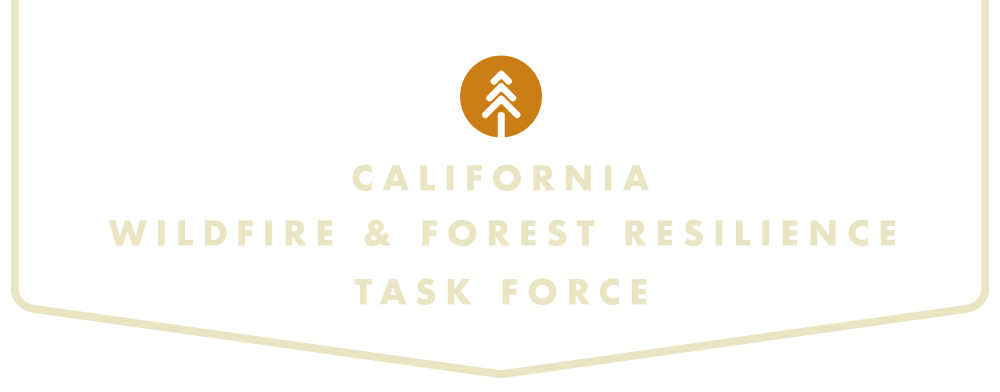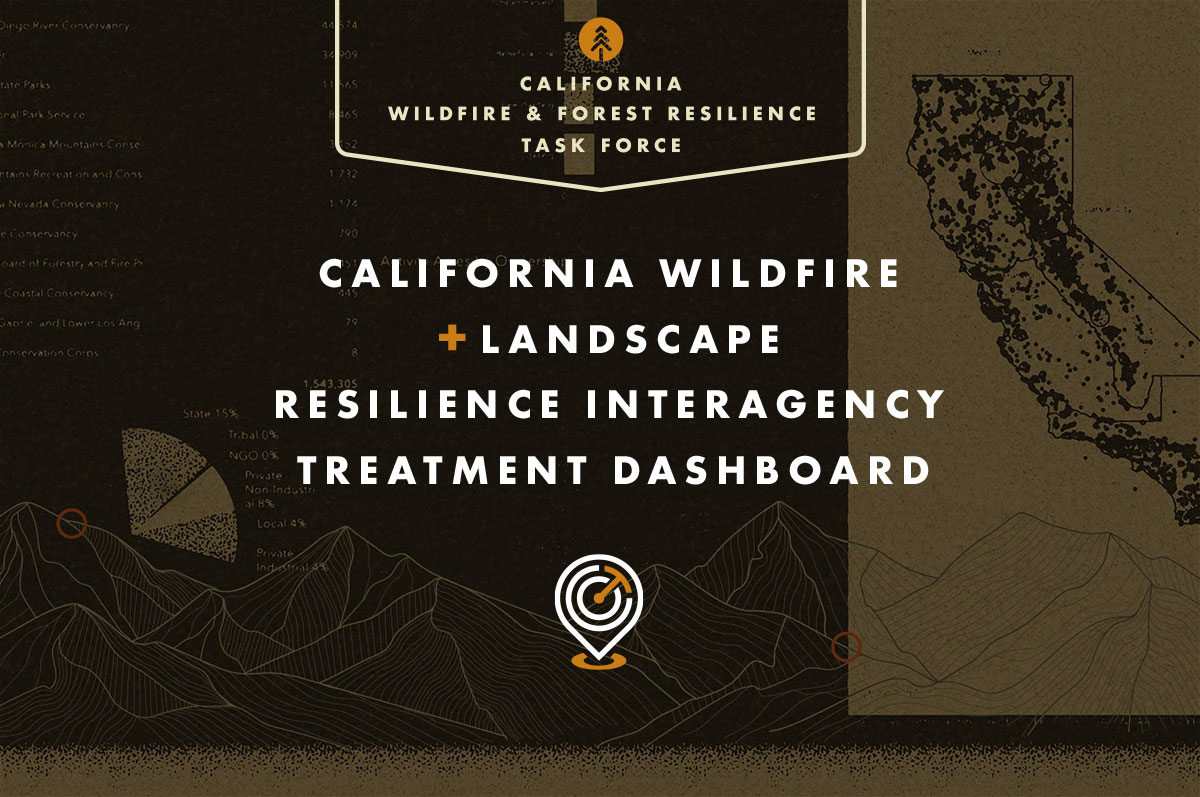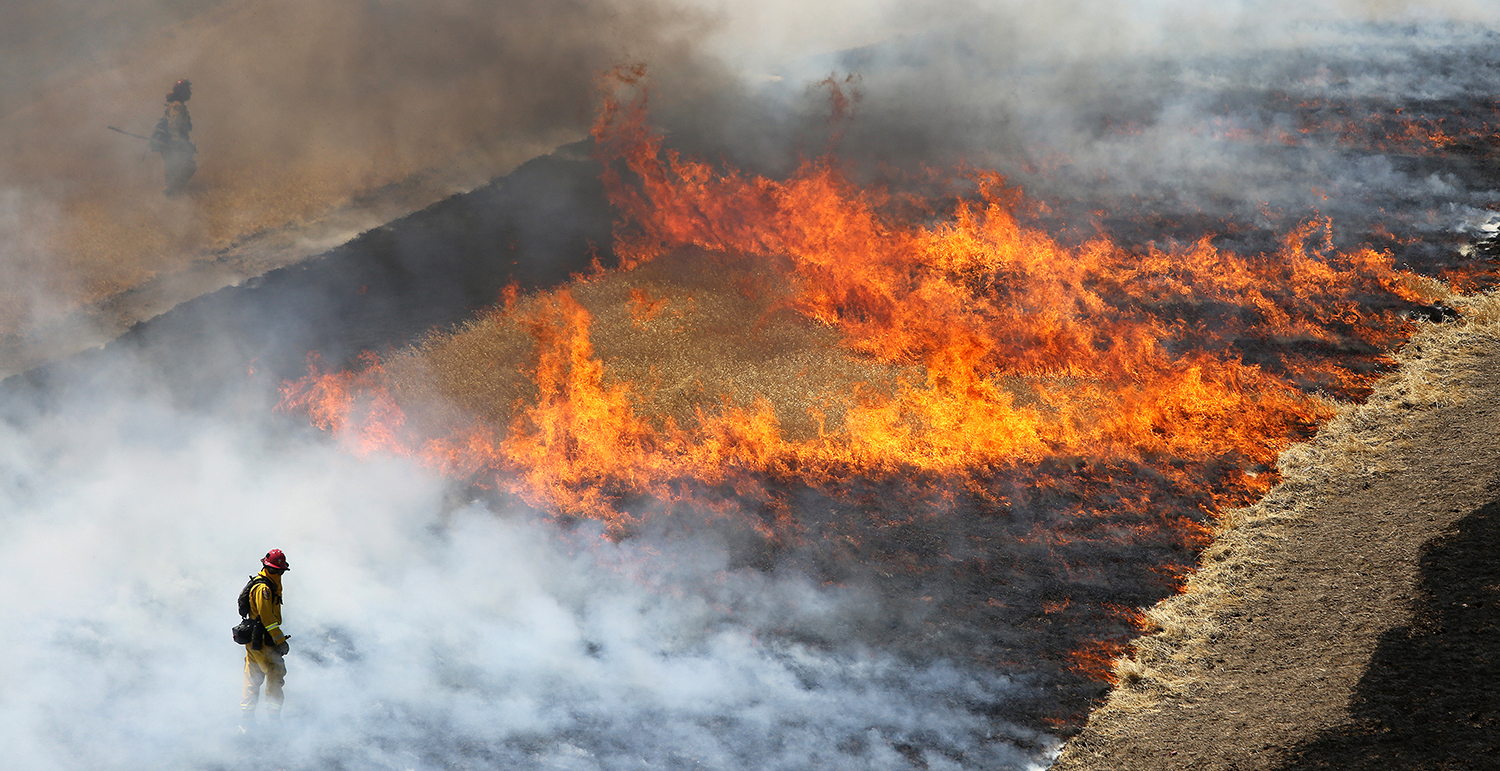Two New Films Showcase Paths to Heal CA’s Relationships with Fire and Watersheds
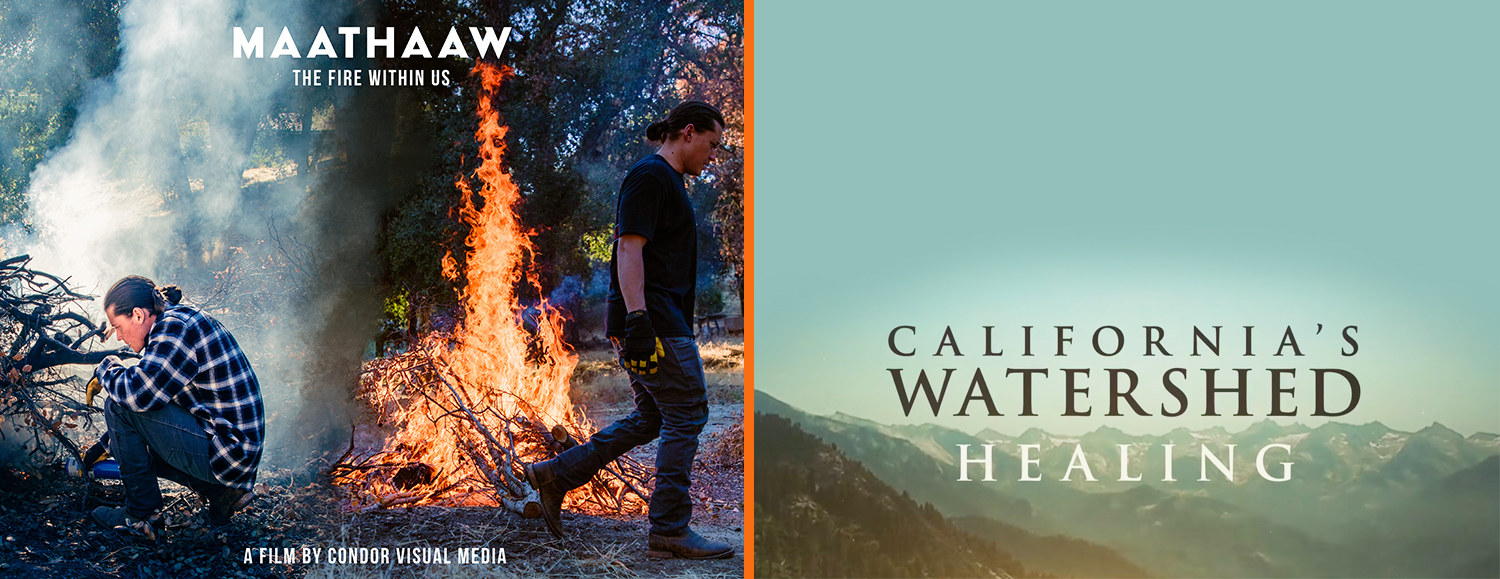
New Films Showcase Paths Forward to Heal California’s Relationships with Fire and Watersheds
MATTAAW: The Fire Within Us
A powerful, Indigenous-led research documentary created by the Condor Visual Media team with support from the Climate Science Alliance, this film documents the cultural, emotional, and scientific relationships of Southern California Tribes with the gift of fire. The film features cultural practitioners who were part of a panel on Cultural Fire and Indigenous Stewardship at our recent Southern California Task Force meeting. The project is still in production with an anticipated release in Spring 2024. However, you can watch the informative and inspiring 12-minute extended trailer now! Learn more about the project and donate here.
California’s Watershed Healing
Documenting how restoring forests to healthier densities has cascading benefits starting from headwaters to watersheds and ultimately to the state’s water supply, this beautiful film features an array of Task Force partners and makes a compelling case for California to better align goals for forest, wildfire, watershed, and landscape resilience. The full-length film created by UC’s Center for Ecosystem Climate Solutions and the nonprofit Chronicles Group is available to watch here.
SNC Celebrates 20 Years of Impact and Awards $27.5 Million to Forest Resilience & Community Protection Projects
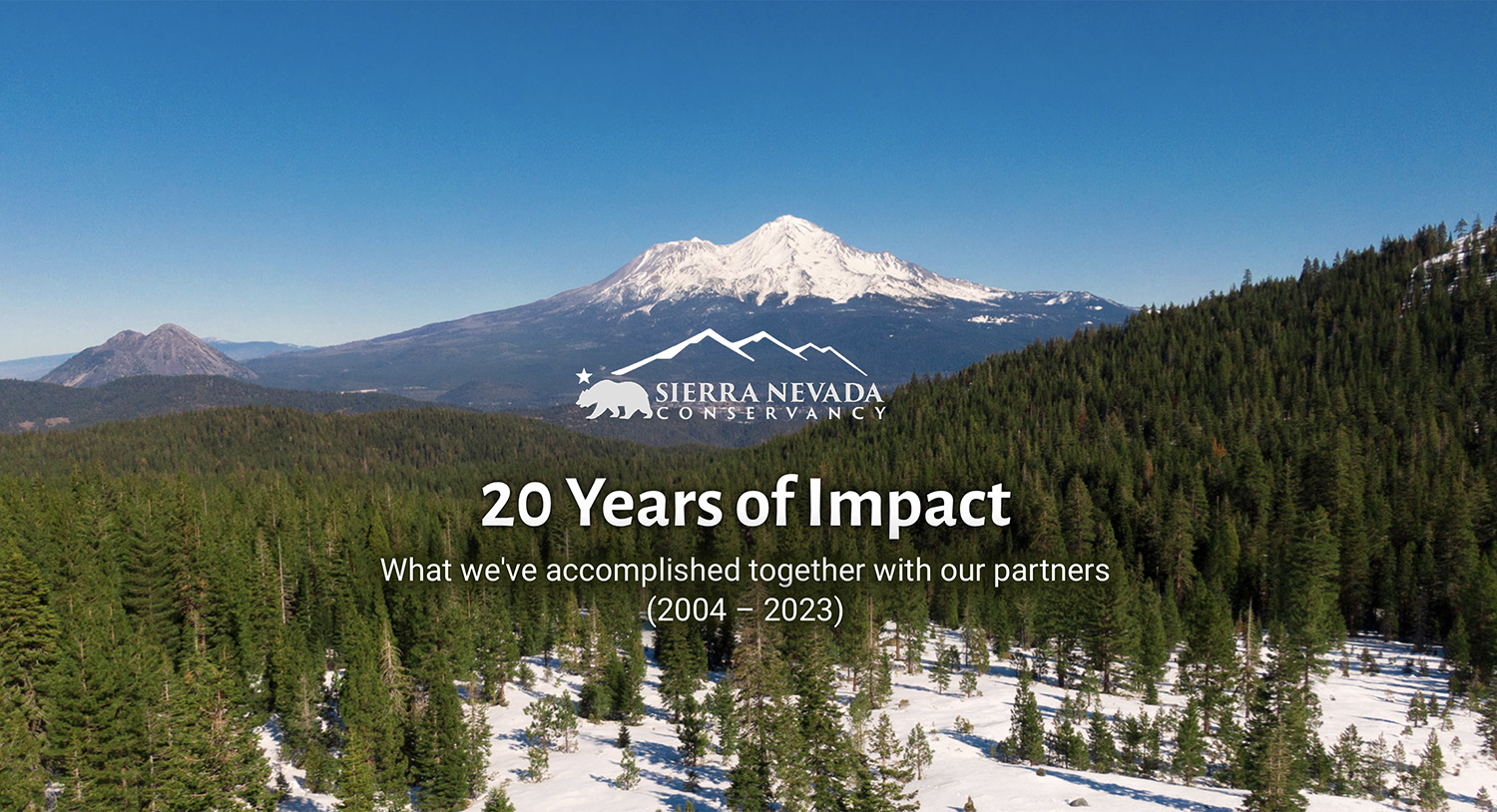
SNC Celebrates 20 Years of Impact and Awards $27.5 Million to Forest Resilience & Community Protection Project
The Sierra Nevada Conservancy (SNC) released a report of accomplishments made with its partners over the past 20 years. SNC is keeping up the good work with the announcement of $27.5 million to 16 different projects that help with the planning and implementation of forest-health efforts that promote recovery and resilience throughout the Sierra-Cascade. Of the 16 projects awarded, eight went to the implementation of shovel-ready projects in Amador, Placer, Plumas, Shasta, Siskiyou, and Tulare counties.
Planscape Adds All Four CA Regions and Launches Plan Journey
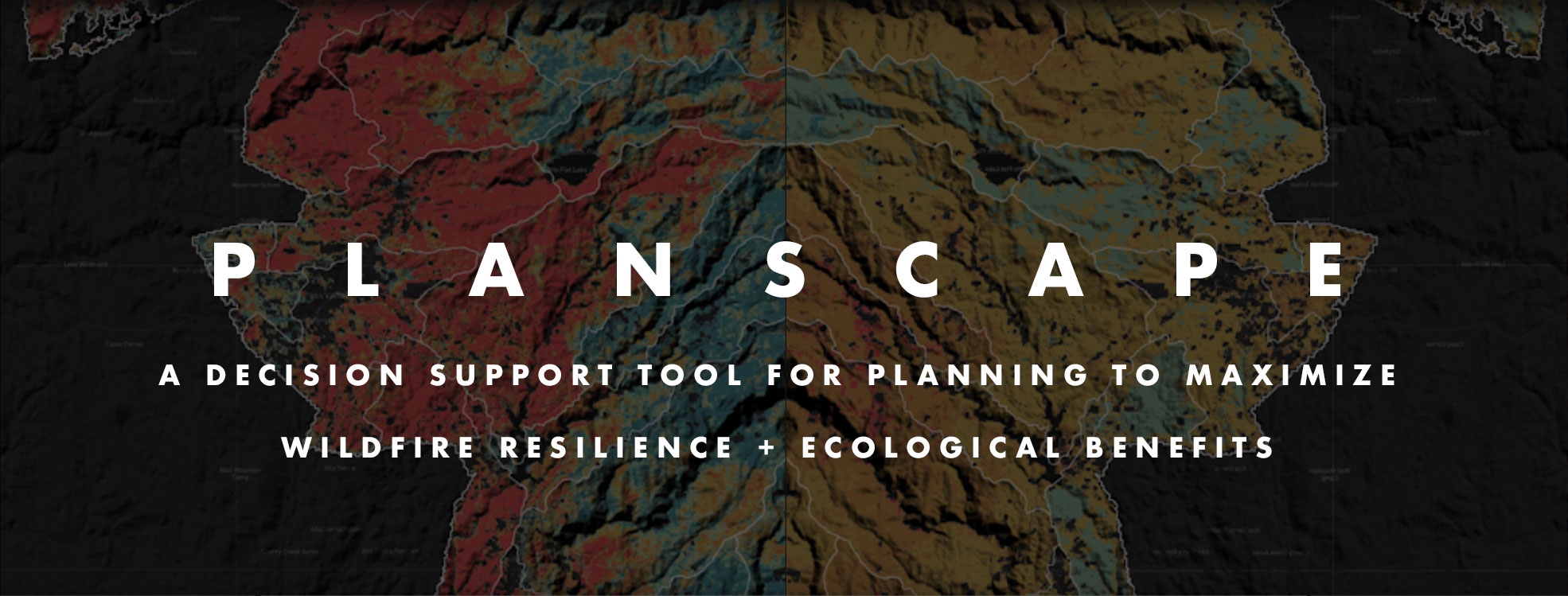
Planscape Adds All Four CA Regions and Launches Plan Journey
Planscape is a free decision support tool built to maximize wildfire resilience and ecological benefits across California. Planscape has expanded its coverage to Northern California and now offers statewide coverage. The recently launched Plan journey helps determine the best locations for land treatment. Planscape is a collaborative effort by the California Natural Resources Agency, the US Forest Service, The University of California, and Spatial Informatics Group (SIG) with support from Google.org.
2023 Year in Review
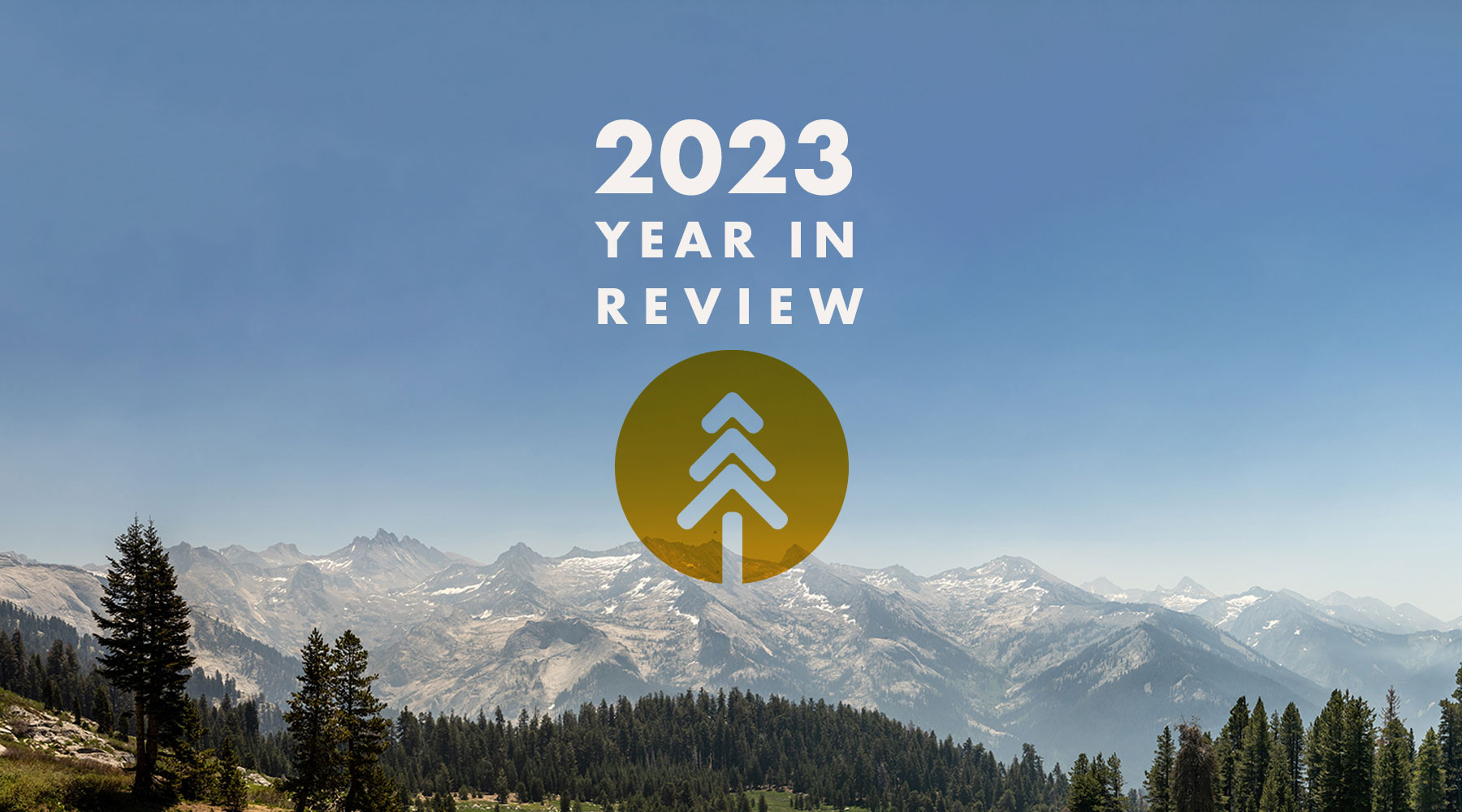
Thank you for being interested and involved in wildfire and landscape resilience efforts in California. Here’s a brief review of 2023 and a preview of what's ahead in 2024. The Task Force Team wishes you and your families a safe, happy and healthy 2024.
2023 highlights
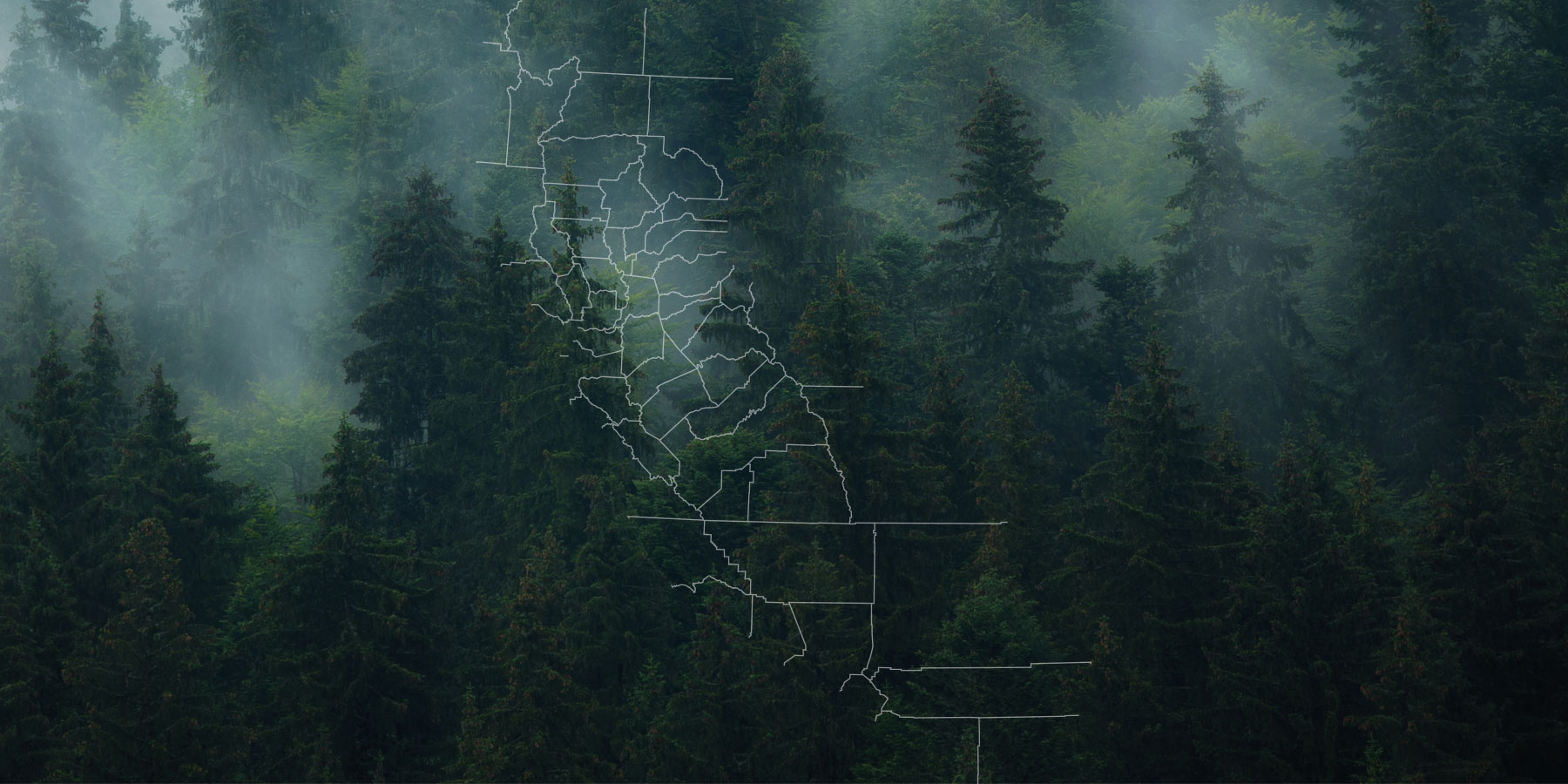
Regional Resource Kits Finalized
Regional Profiles and Regional Resource Kits are now available for all four regions of California. The kits bring together the scientific data needed to help regional entities plan, prioritize and monitor projects.

Treatment Dashboard Launched
The Wildfire & Landscape Resilience Interagency Treatment Dashboard is a highly interactive online tool that displays the location and size of wildfire and landscape resilience treatments throughout the state, helping to guide practitioners on where to plan new projects.

Planscape Beta Available
With a full launch expected in 2024, Planscape can be accessed now to test the early functionality and share feedback. This unique wildfire resilience decision support tool helps regional planners prioritize landscape treatments to mitigate fire risk, maximize ecological benefits, and help landscapes adapt to climate change.
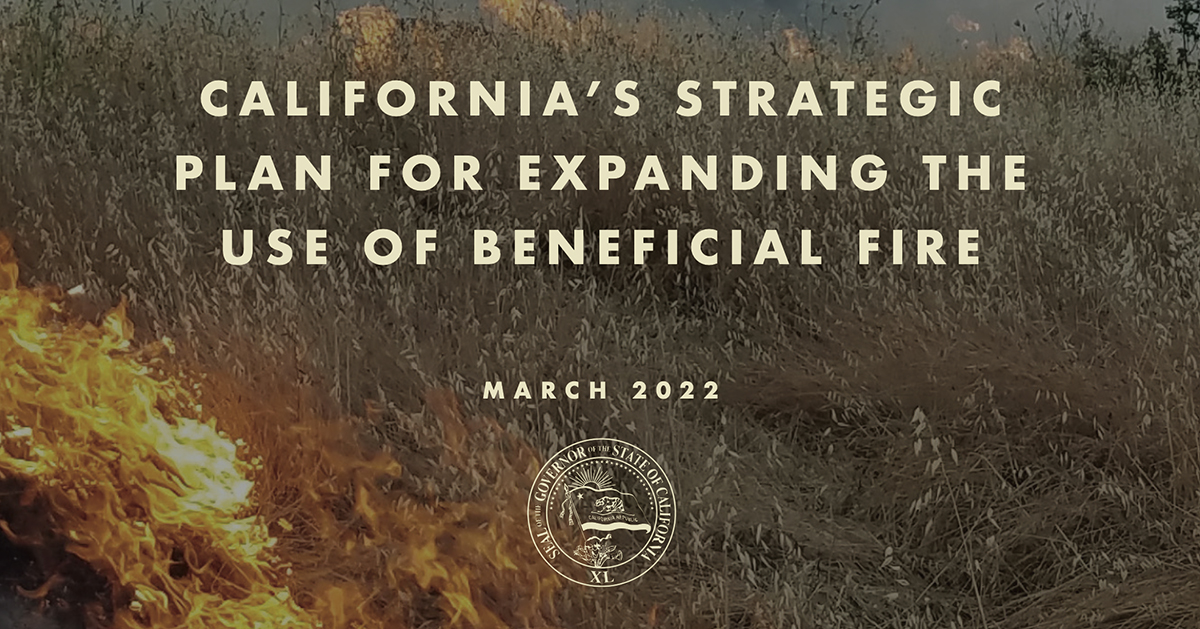
Joint Strategies Completed for Beneficial Fire and Sustainable Outdoor Recreation
Task Force Work Groups completed and launched their Joint Strategies as required in California’s Wildfire & Forest Resilience Action Plan. Click below to see them, and look forward to Reforestation Pipeline, Resilient State Lands and Private Landowner strategies to be published in early 2024.
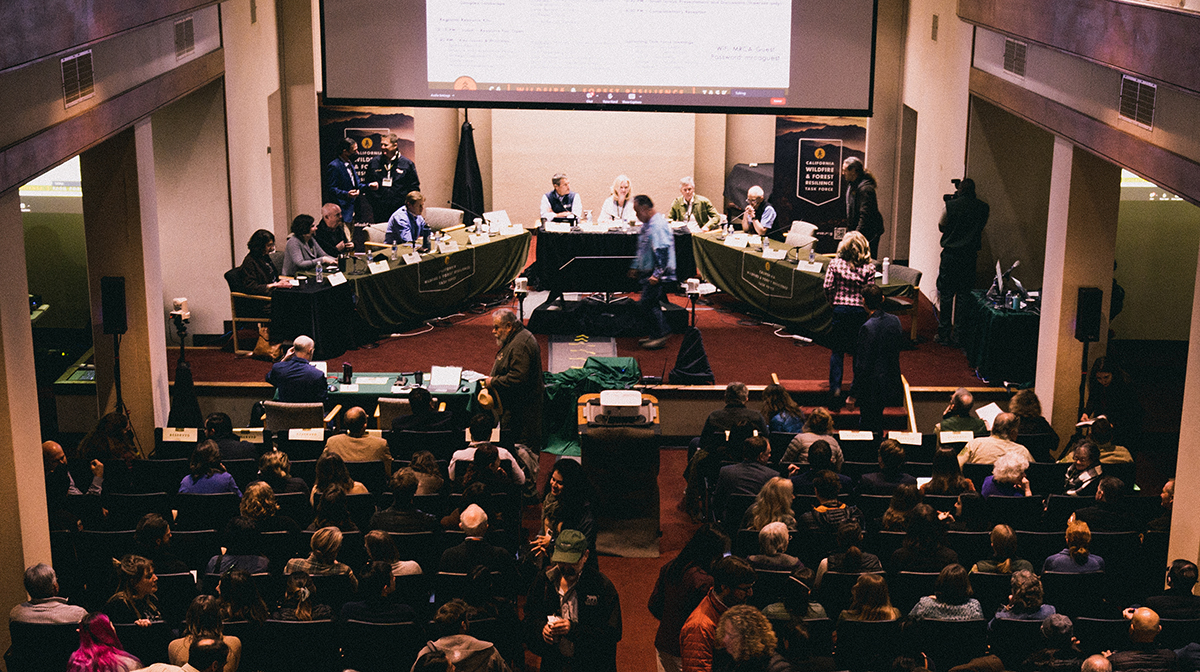
Regional Meetings in Southern, Central and Northern California
There’s no better way to align resources than bringing people together to focus on regionally specific issues. Three regional meetings were held in 2023, and three more in Sacramento. Hundreds of people came away from the meetings having learned new information, and having made new connections, and inspired to make positive change.
spread the word in 2024
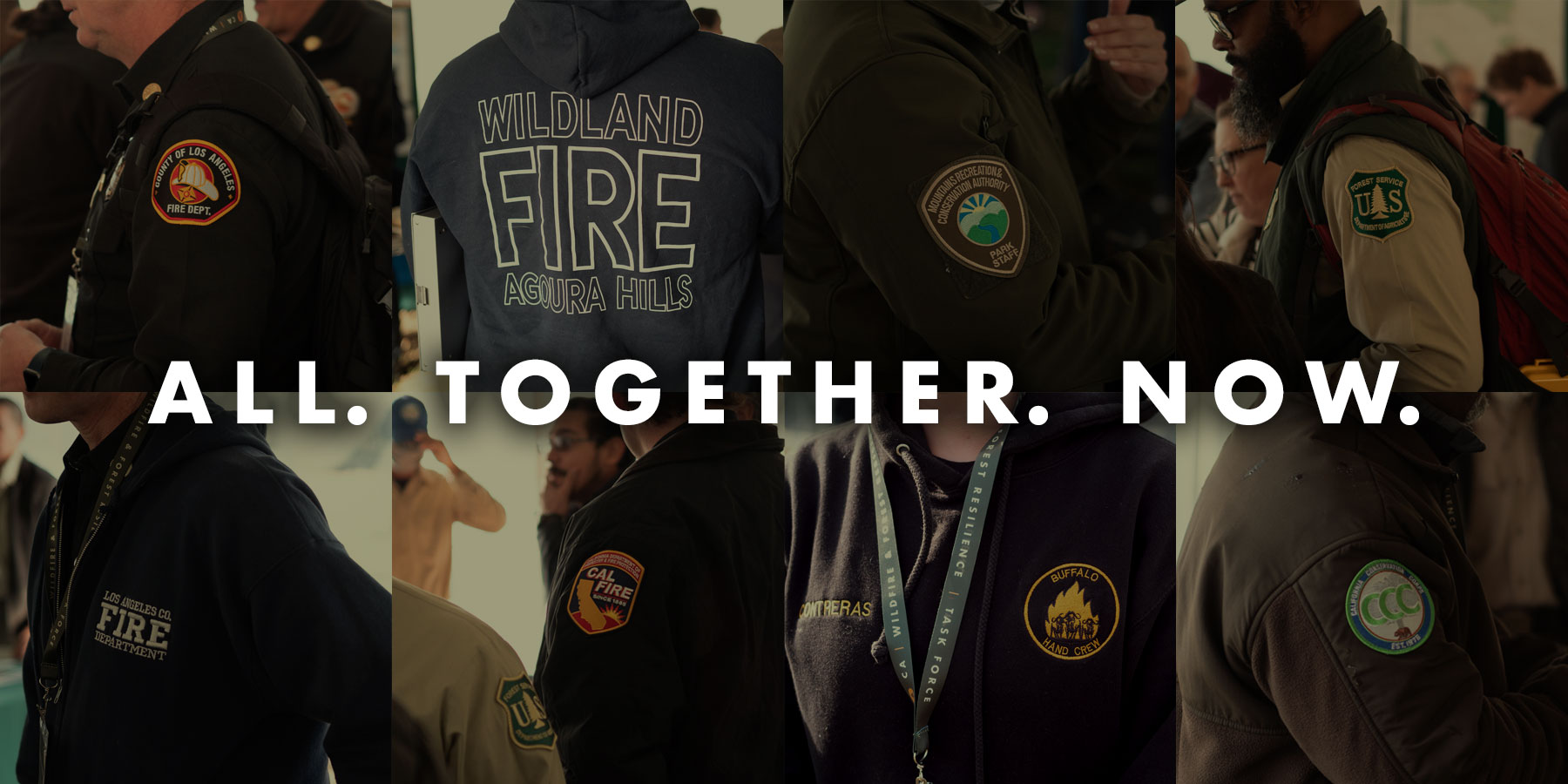
Promote the Task Force in Your Communications
The Task Force is an important source of vital information on the combined efforts of those involved in landscape resilience and wildfire prevention in California. Please follow and share Task Force communications when you can.
Join us at our Upcoming Meetings
April 4-5: Southern CA Region
June 20: Sacramento
September 26-27: Sierra Region
December 13: Sacramento
RESOURCES
ABOUT THE TASK FORCE
The California Wildfire & Forest Resilience Task Force was created by the Office of Governor Gavin Newsom to directly confront the near perfect storm of climatic and human-caused conditions that have brought the threat of devastating wildfire and its far-reaching effects to the doorstep of nearly everyone in our state, and beyond.
The Task Force is a collaborative effort to align the activities of federal, state, local, public, private, and tribal organizations to support programs and projects tailored to the priorities and risks of each region and bring the best available science to forest management and community protection efforts.
The critical work of the Task Force effects all Californians, and Task Force meetings offer an ideal opportunity for members of the press to hear directly from those involved in the comprehensive, coordinated efforts to reduce the risk of catastrophic wildfires and create safe communities while ensuring healthier, more sustainable natural environments.
Newsom Administration and Natural Resources Agency Launch Plan for Increasing Access to the Outdoors
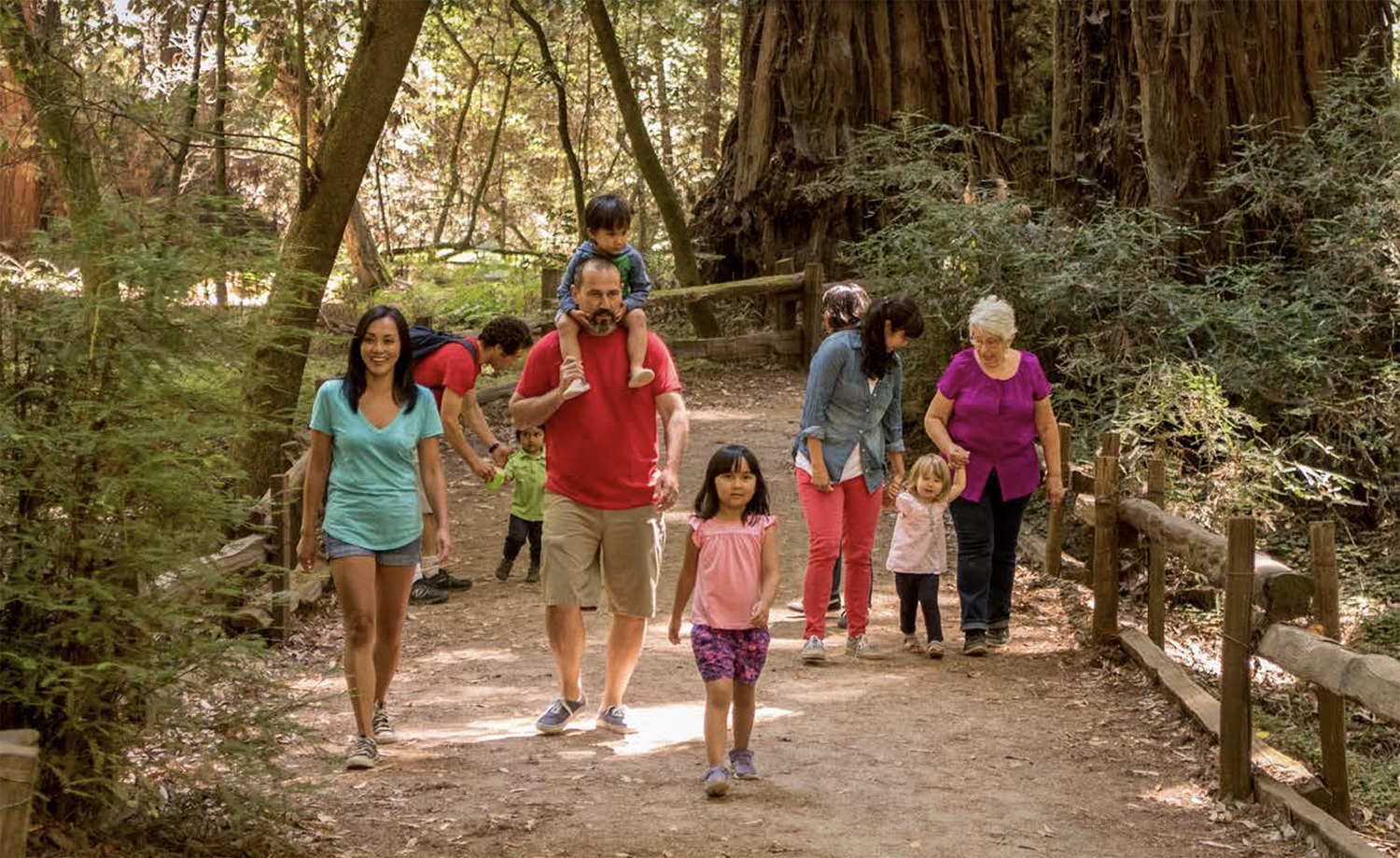
Newsom Administration and Natural Resources Agency Launch Plan for Increasing Access to the Outdoors
On November 15, CNRA announced the release of the Outdoors for All Strategy which provides a blueprint to increase access to the outdoors for all Californians. Increasing access to nature is vital step to create connection and understanding of California’s most pressing climate resilience issues. The Strategy includes six key priorities:
- Establishes spaces for people and nature to thrive by creating and maintaining more high-quality outdoor spaces of all shapes and sizes, especially in park-limited places;
- Fosters belonging in the outdoors through policies and programs that build a welcoming and inclusive culture;
- Connects people and the outdoors by improving information and transportation;
- Co-creates with communities through frequent and meaningful tribal consultation and community engagement, with attention to underserved communities;
- Builds equitable career pathways and a representative workforce by improving opportunities for all Californians to enter and sustain outdoor recreation, natural resources and restoration professions;
- Aligns funding to achieve Outdoors for All in partnership with federal, state, and non-governmental entities.
Liberty Utilities Partners for Powerline Resilience Corridor Project
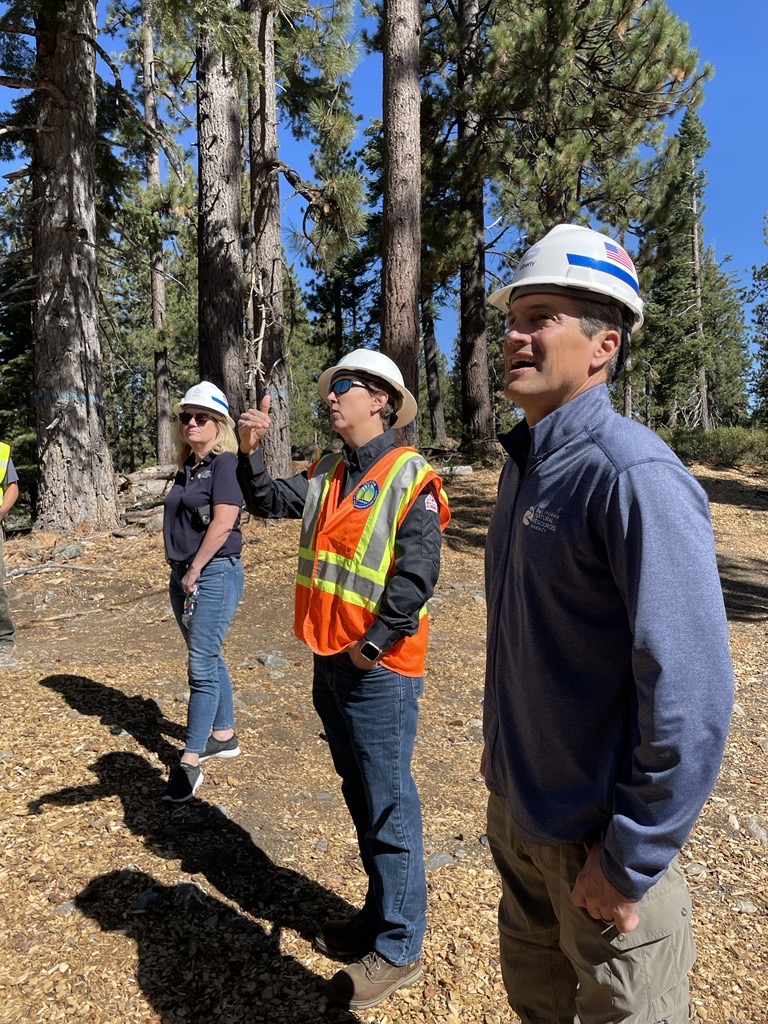
Liberty Utilities Partners for Utilities Powerline Resilience Corridor Project
To protect the remarkable Lake Tahoe Basin from wildfire risks, Liberty Utilities’ Powerline Resilience Corridor Project is reducing fuels along powerlines and working alongside the U.S. Forest Service, the National Forest Foundation, and the California Tahoe Conservancy to expand fuels treatments to increase energy safety and promote wildfire resilience in this ecologically and economically important region. Multi-partner collaborations like this project are imperative to Task Force goals to scale up treatments from individual project to landscape scale.
Lisa Lien-Mager Appointed CNRA Deputy Secretary for Forest and Wildfire Resilience
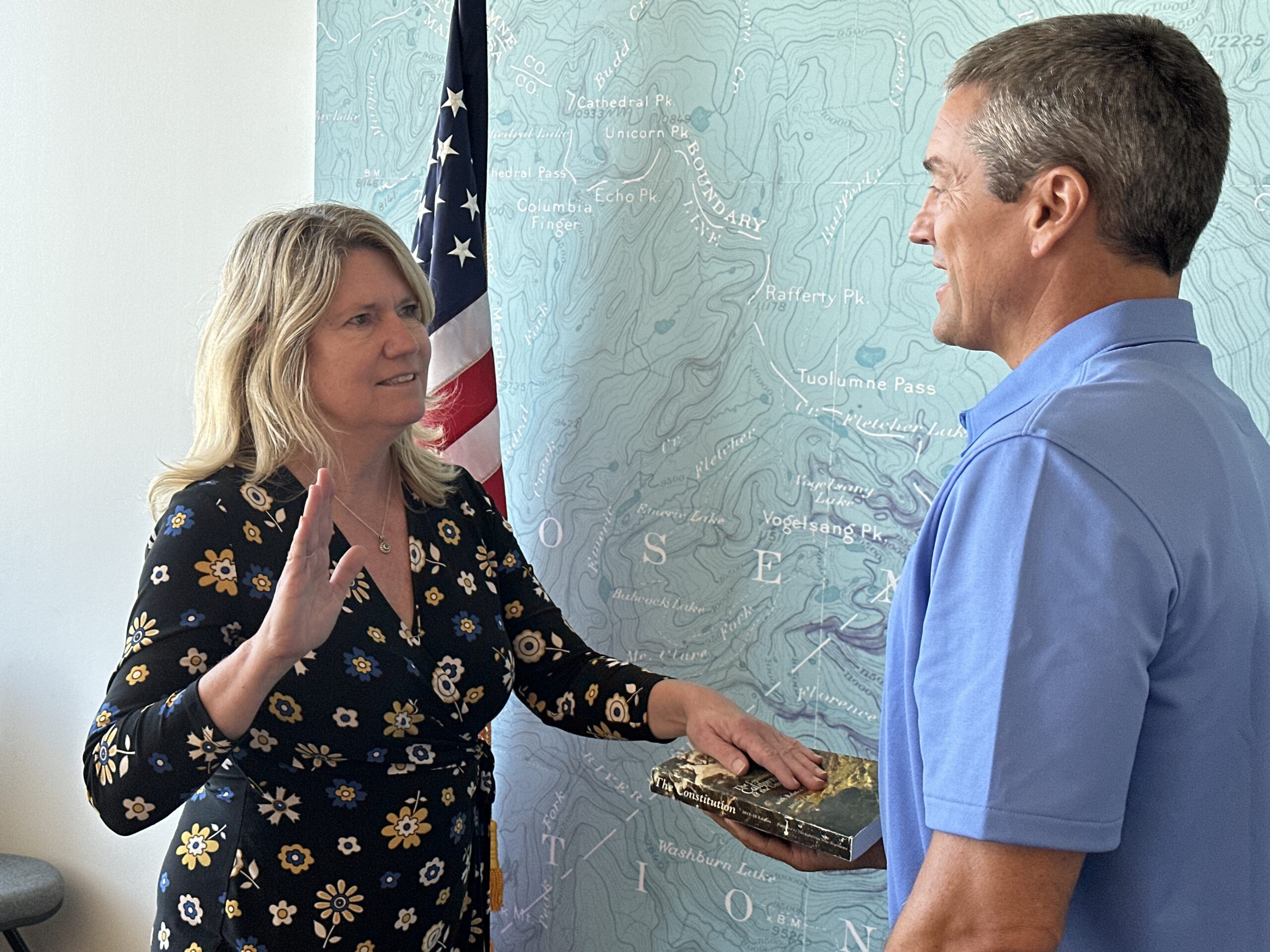
Lisa Lien-Mager Appointed CNRA Deputy Secretary for Forest and Wildfire Resilience
On September 5, Lisa Lien-Mager was sworn in as CNRA’s new Deputy Secretary for Forest and Wildfire Resilience. This position oversees a wide swath of programs, all intended to promote forest health for wildfire and community resilience. Prior to her appointment, Lien-Mager served as CNRA’s Senior Advisor for Strategic Communications since 2021 and as Deputy Secretary for Communications since 2017. Tony Andersen, formally the Deputy Director for Strategic Communications at CAL FIRE, will succeed Lien-Mager as CNRA’s new Deputy Secretary of Communications.
New Online Treatment Dashboard to Track Wildfire Resilience Projects
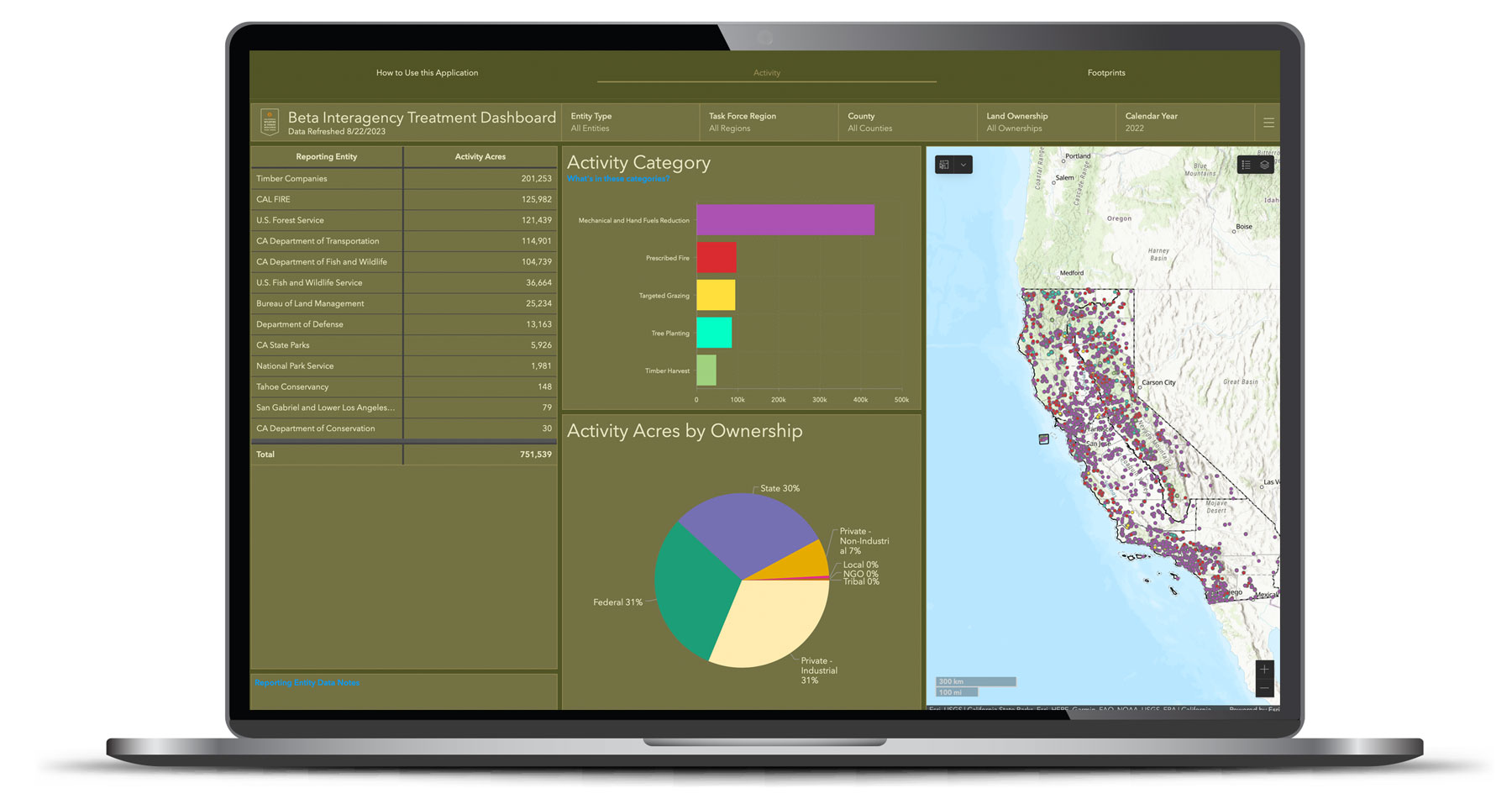
New Online Treatment Dashboard to Track Wildfire Resilience Projects
On August 29, the Governor’s Wildfire and Forest Resilience Task Force launched the beta version of a first-of-its-kind Interagency Treatment Dashboard beta that displays the size and location of state and federal forest and landscape resilience projects in California.
The dashboard offers a one-stop-shop to access data, provide transparency, and align the efforts of more than a dozen agencies to build resilient landscapes and communities in California. It reports treatment activities such as prescribed fire, targeted grazing, uneven-aged timber harvest, mechanical and hand fuels reduction, and tree planting. Users can sort treatments by region, county, land ownership and more.
The beta version of the dashboard will continue to be refined to include additional data, including projects by local and tribal entities, along with revisions based on public feedback. An official launch is expected in spring 2024 with more complete data on projects implemented in 2022.
California Launches Online Tool to Track Wildfire Resilience Projects

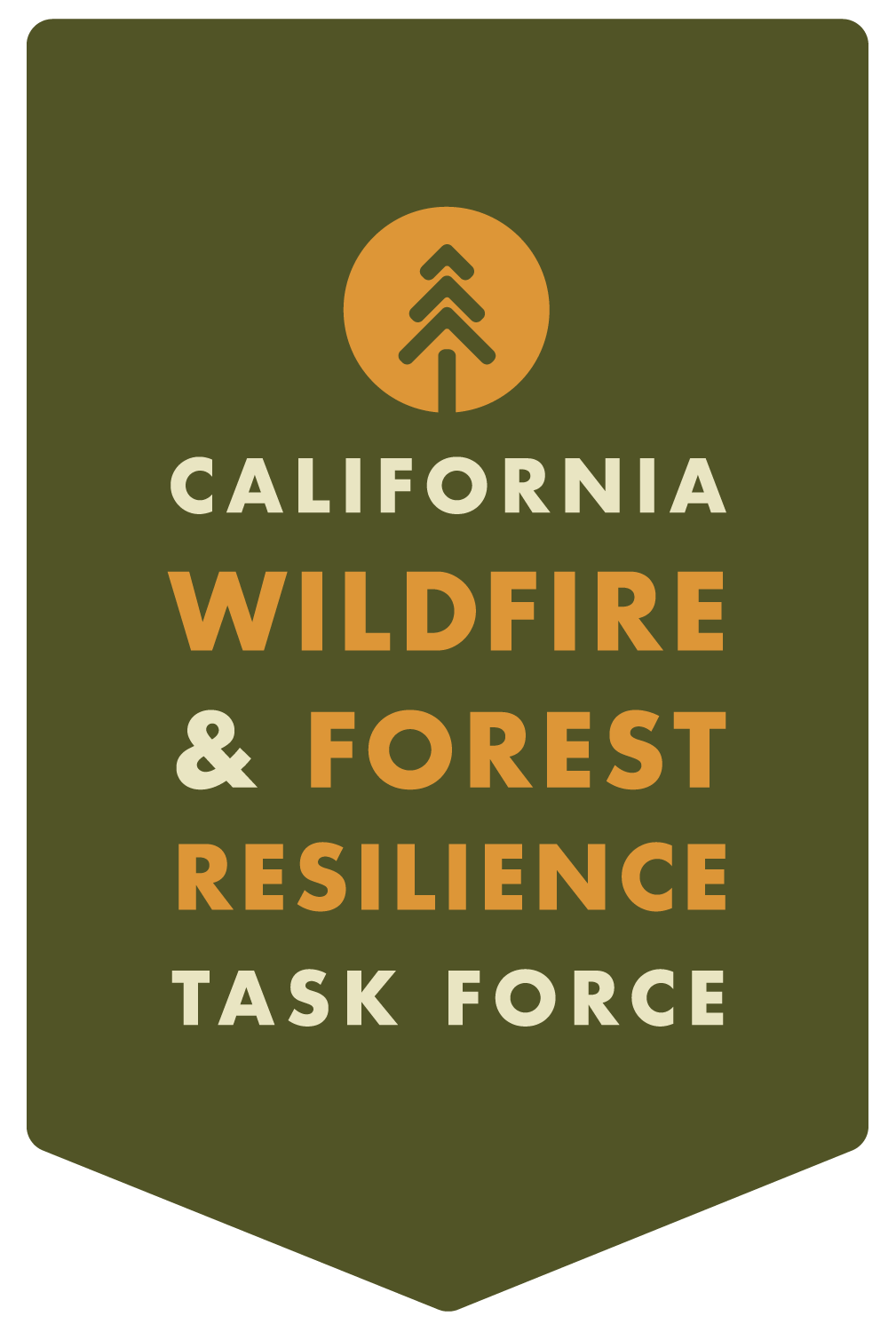
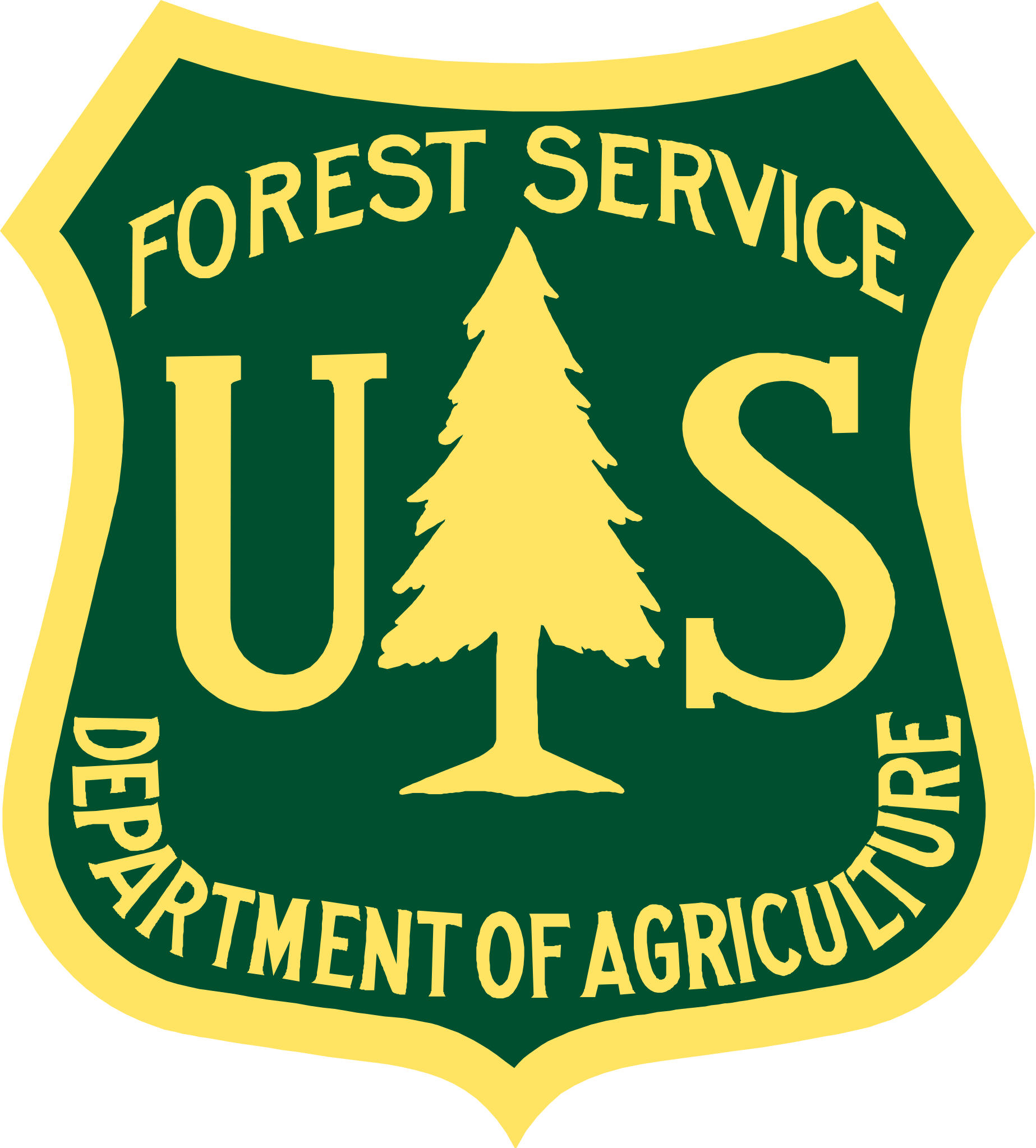
FOR IMMEDIATE RELEASE
August 29, 2023
California Launches Online Tool to Track Wildfire Resilience Projects
New beta statewide tracking system brings local, state, and federal wildfire resiliency projects into one place to reflect significant progress.
(Sacramento, CA) – Today, the Governor’s Wildfire and Forest Resilience Task Force (Task Force) launched the beta version of a first-of-its-kind Interagency Treatment Dashboard that displays the size and location of state and federal forest and landscape resilience projects in California.
The dashboard offers a one-stop-shop to access data, provide transparency, and align the efforts of more than a dozen agencies to build resilient landscapes and communities in California. It reports treatment activities such as prescribed fire, targeted grazing, uneven-aged timber harvest, mechanical and hand fuels reduction, and tree planting. Users can sort treatments by region, county, land ownership and more.
“Thanks to historic funding from our Legislature and Governor Newsom, over 1,000 wildfire resilience projects are in motion across the state to protect communities and our diverse landscapes from catastrophic wildfire,” said California Secretary for Natural Resources Wade Crowfoot, co-chair of the Task Force. “Now we can track our progress like never before through this public Interagency Dashboard. It identifies where projects are happening, what kind of work is happening in a given location, and how much overall resilience work is being done. It’s one more step forward in building a comprehensive, durable approach to increasing our wildfire resilience in years to come.”
“This dashboard delivers a new tool for collaboration among agencies and communities,” said U.S. Forest Service Regional Forester Jennifer Eberlien, who co-chairs the Task Force with Secretary Crowfoot. “Having access to treatment information in this format will allow us to coordinate landscape scale activities aimed at restoring and enhancing ecosystem resilience.”
The dashboard compiles data from a broad range of organizations and government departments—many of which have different reporting requirements guiding how they capture information. While individual reporting tools and data will sometimes differ from this statewide snapshot, the dashboard brings these different reporting approaches together as a single and streamlined reporting tool. Key differences are addressed in the dashboard website FAQs .
“It takes everyone to create a more wildfire resilient California and this dashboard reflects the strides being made to get us there,” said CAL FIRE Director and Fire Chief Joe Tyler. “This dashboard shows how far we’ve come, the significant efforts underway, and our firm commitment to future work. As our many partners share data and outcomes to a central place, the mission of protecting communities and natural resources will remain the common thread driving our work. This new tool will also provide first responders a snapshot of where treatment has occurred to help inform fire suppression efforts.”
The dashboard is an important step to increase the pace and scale of statewide actions addressing California’s wildfire crisis and is a key deliverable of the Governor’s Wildfire and Forest Resilience Action Plan , issued by the Task Force in January 2021.
The beta version of the dashboard will continue to be refined to include additional data, including projects by local and tribal entities, along with revisions based on public feedback. An official launch is expected in spring 2024 with more complete data on projects implemented in 2022.
Contact Information:
Sky Biblin, Communications Coordinator
Governor’s Wildfire and Forest Resilience Task Force
916-502-6527
Albert Lundeen, Director of Media Relations
California Natural Resources Agency
albert.lundeen@resources.ca.gov
916-606-3990
D’Artanyan Ratley, Public Affairs Specialist
USDA Forest Service
Prescribed Fire Liability Claims Fund Pilot
Prescribed FireLiability Claims Fund Pilot
The Need
One of the primary obstacles to increasing the use of prescribed and cultural fires in California is the difficulty of obtaining adequate liability coverage. While escape rates are very low, there is always some risk when working with fire. Liability coverage protects qualified practitioners, property owners, and the public from the associated financial risk. However, many practitioners on private or tribal land are unable to obtain affordable private insurance for beneficial fire operations.
The Legislation
In September 2022 Governor Newsom signed into law SB 926, which established a pilot Prescribed Fire Claims Fund. This legislation authorizes claims covering certain losses arising from prescribed fires and cultural burning until January 1, 2028. This claims fund is intended to both encourage increased beneficial fire use and demonstrate that prescribed and cultural burning is low risk, to entice private insurers back into the market.
The Fund
Administered by CAL FIRE, the $20 million allocated for the Prescribed Fire Liability Claims Fund Pilot will cover losses in the rare instance that a prescribed or cultural burn escapes control, providing up to $2 million in coverage for prescribed fire projects led by a qualified burn boss or cultural practitioner. The fund is meant to demonstrate that carefully planned, resourced, and implemented beneficial fire is a low-risk land management tool to mitigate high-severity wildfires and promote healthy and resilient landscapes.
To Enroll
Enrollment in the Fund is done by completing the California Prescribed Fire Claims Fund Online Application. To be eligible to enroll in the Fund, a prescribed fire must be conducted or supervised by a Burn Boss or a Cultural Fire Practitioner for a Cultural Burn.
Questions
CAL FIRE offers a detailed set of Frequently Asked Questions, covering everything from enrollment, application approval, claims submissions, coverage limits and much more.
RESOURCES
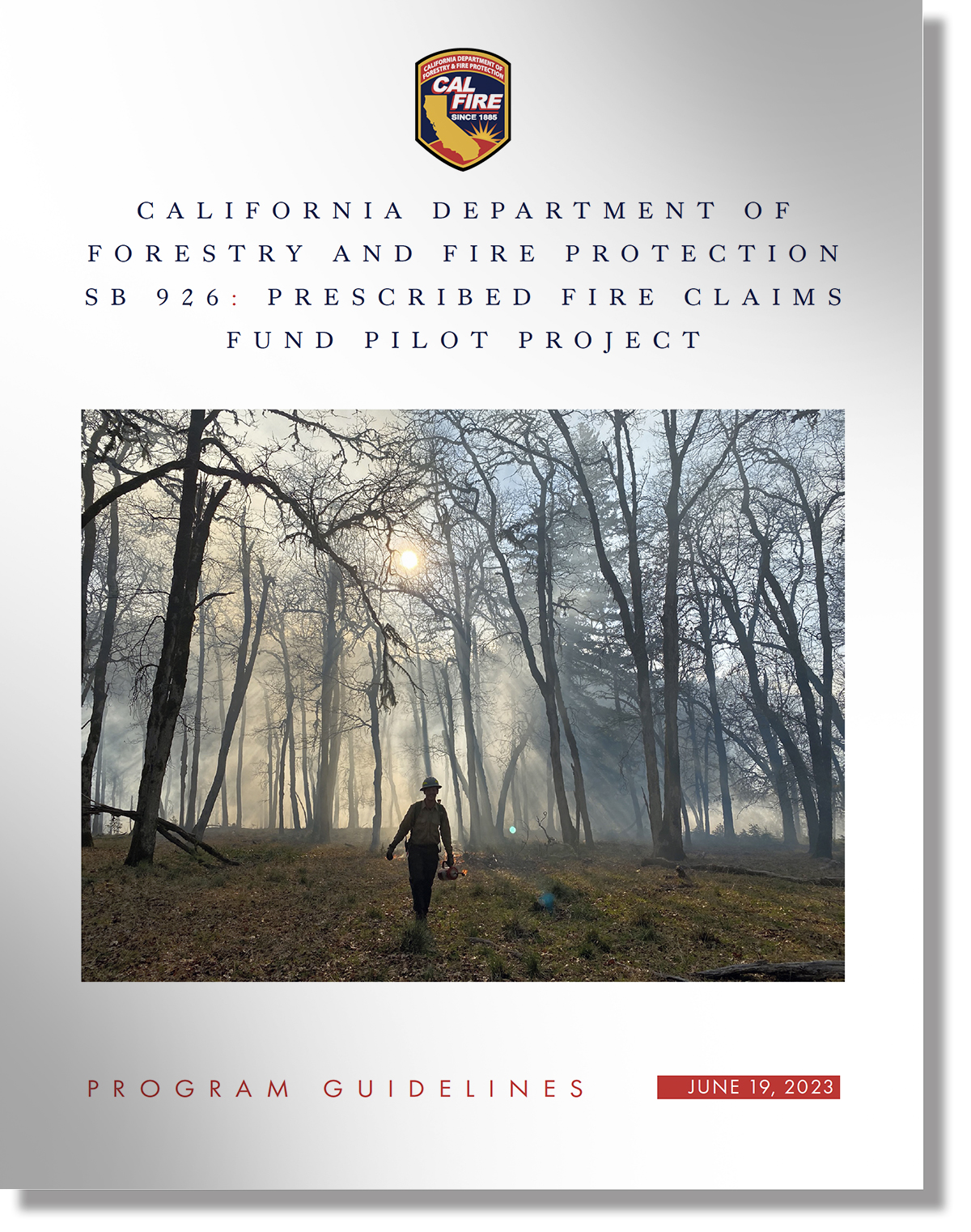
Interview with Lenya Quinnn-Davidson on the Prescribed Fire Claims Fund
California Takes a Big Step to Help Insure Private Companies That Fight Fire With Fire
